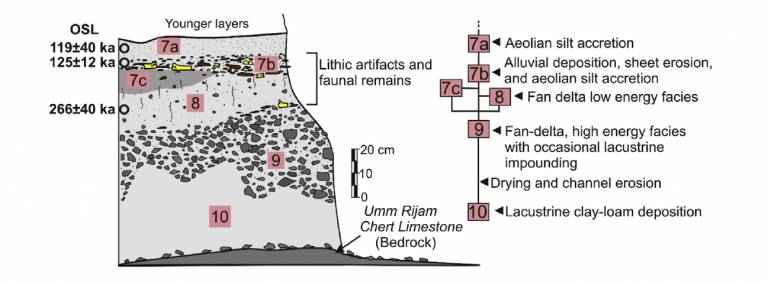Cross-over Immunoelectrophoresis sheds light on Levantine hominin subsistence during the Middle Pleistocene
8 August 2016
Excavations at Shishan Marsh, a former desert oasis in Azraq, northeast Jordan, reveal a unique ecosystem and provide direct family-specific protein residue evidence of hominin adaptations in an increasingly arid environment approximately 250,000 years ago.
 Based on lithic, faunal, paleoenvironmental and protein residue data, a team of archaeologists conclude that Late Pleistocene hominins were able to subsist in extreme arid environments through a reliance on surprisingly human-like adaptations including a broadened subsistence base, modified tool kit and strategies for predator avoidance and carcass protection.
Based on lithic, faunal, paleoenvironmental and protein residue data, a team of archaeologists conclude that Late Pleistocene hominins were able to subsist in extreme arid environments through a reliance on surprisingly human-like adaptations including a broadened subsistence base, modified tool kit and strategies for predator avoidance and carcass protection.Middle Pleistocene subsistence in the Azraq Oasis, Jordan: Protein residue and other proxies
A. Nowell, C. Walker, C.E. Cordova, C.J.H. Ames, J.T. Pokines, D. Stueber, R. DeWitt, A.S.A. al-Souliman
DOI: 10.1016/j.jas.2016.07.013
 Close
Close

